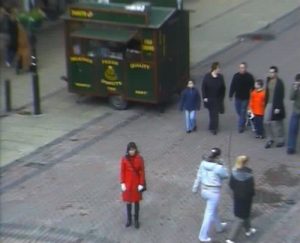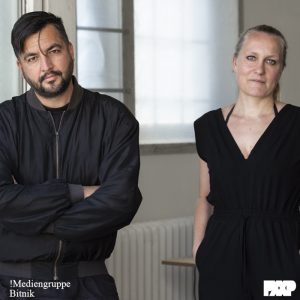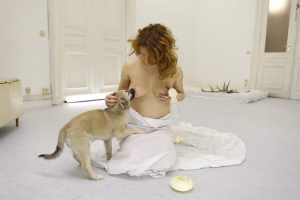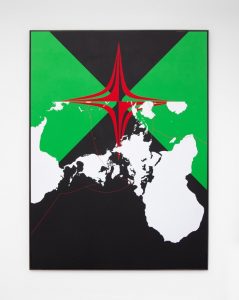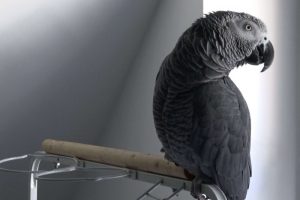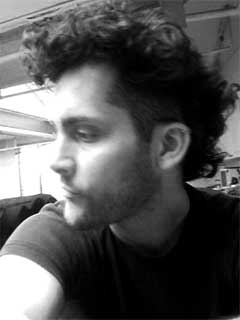 I’m getting fed up with wmmna but as i’m addicted to blogging i have to find a way to renew the formula. My first attempt to spice things up is a series of interviews i made with media artists, activists, interaction designers, bloggers, hackers, researchers, etc. Anyone i find interesting.
I’m getting fed up with wmmna but as i’m addicted to blogging i have to find a way to renew the formula. My first attempt to spice things up is a series of interviews i made with media artists, activists, interaction designers, bloggers, hackers, researchers, etc. Anyone i find interesting.
The first episode features Marcus Kirsh. He worked, together with Jussi Angesleva, on one of my favourite projects ever: Urban Eyes.
The first version of the project was only a concept developed when the pair was studying Interaction Design in London:
Urban Eyes is a service combining CCTV networks and pigeons to provide an alternative view on the city.
Users have to feed the pigeon with Urban Eyes bird seed. The special seed can be bought in a camera shop and contains RFID tags. When the bird flies about, the seed triggers the CCTV / webcam network (cameras would have been previously fitted with RFID readers) in a city based on its proximity to the camera. The images are then sent to the user’s PDA, creating a story about the bird and the city.
Due to the purpose of the camera network, the view one perceives, is quite different from the market orientated, everyday media exposure. Ranging from traffic cameras on the lamp posts to gate cams to back yards and living rooms.”
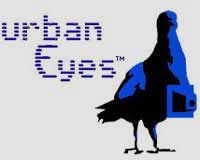
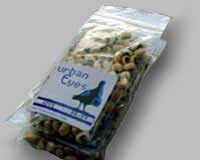
Following a V_2 residency development, a prototype of Urban Eye was shown on 24th November in Rotterdam, with live pigeons present at the V2_ showroom, a positive reaction from the audience and best wishes from Lev Manovich. The project is now quite different from the original concept:
“The installation is based on a combination of modular feeding platforms and ringed pigeons. Using RFID tags in those birdrings, a pigeon who lands on a feeding platform triggers the RFID reader and computer contained in the box, which then launches a bluetooth software to publish the pigeon’s imagery and messages to surrounding bluetooth devices. All the user has to bring is a bluetooth enabled device and some birdseeds.
The imagery and messages delivered by the bird are based on the surrounding area’s publicly available cameras(only if feeding platform is web-enabled) and/or other location based imagery and messages, resources for that can be anything visible or audio accessible that has a contextual connection to the habitat of the pigeons and the feeding box.
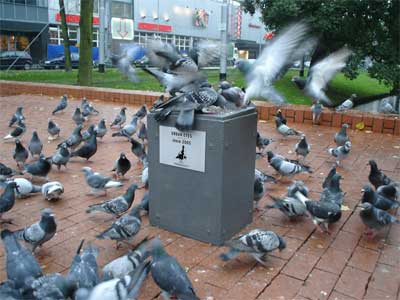 Feeding pigeons in Rotterdam
Feeding pigeons in Rotterdam
If only one platform is set up, the imagery’s order is dependent on the observed bird’s behaviour pattern, if more feeding platforms are available to create a network, exact time and locations of the bird travel can be measured in real time and imagery provided accordingly.”
Angesleva and Kirsh are now in preparation for NODE London(www.nodel.org) and an exhibition later in May this year with HTTP galleries and more tagged pigeons.
Marcus grew up in the Saarland (Germany, next to the French border) and lives in London, for 5 years since his MA in Interaction Design at the Royal College of Art in London.
How would you describe yourself? Interaction designer?
Call me media innovator and technoartist ;)
Everyone seems to be an interaction designer these days those seem to only do websites.
Sometimes, the boundaries between art and critical or concept design are extremely thin. I see urban eye as an artistic project. Do you feel uncomfortable with the idea of being associated with art rather than design?
That question has haunted most of my projects since Royal College. It’s in the same box as “So are you a designer or are you a programmer?” There is a good and a bad side to discussing those terminologies. It’s fascinating how they can be both a help and a discrimination. I personally don’t believe in these restrictions by terminology, but am aware of the institutionalisation of creative thought, where most of these definitions come from. The only worrying thing about being called art is when someone says: “I don’t understand it, but as it is art, I guess it’s supposed to be that way.” There can be barrier for interaction and communication through such terms, which naturally leads me to avoid such terms and let the viewer decide. So I won’t answer you if this is an art or design project, you can call it Paul as long as you take the time to engage with it.
If i understood well, Urban Eye was just a concept you made while you and Jussi were studying at the Royal College of Art and you had no intention to make a real prototype, am i wrong?
That’s right. Given the brief from Philips Research, its aim was to develop an idea about mobility and we were asked to consider future technology that could be on the market in about 5 years. We didn’t go much further with it till the Fusedspace competition as we were both busy with other projects, like the CLONE POINTER concept which I handed in as well, but Fusedspace’s brief fitted all too perfect. Preparing it for the competition made clear that by now (3 years later), the technology for a prototype is here and affordable enough that we could build it. When V2_’s invitation came, we were discussing how far we wanted to push it and a small prototype that can show the experience of the initial idea was a good way to make the concept more accessible and understandable to people.
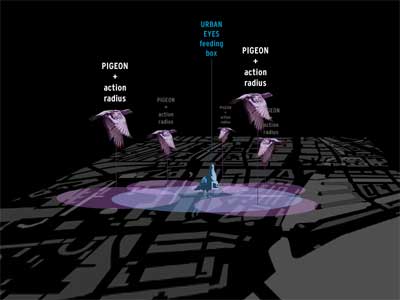
Are you happy with the prototype being so different from the original idea? do you have any plan to “improve” the project in the future?
I think I can speak for both Jussi and me, that we are very happy with the working prototype. Scaling down a whole network system to a single module, but still preserving the initial story and interaction, that’s the best we could hope for. The presentation in text and (moving) image just can’t show the experience you get with the life animals in urban space, now we can do that. We had showed that in Rotterdam, this year there will be London and maybe San Jose. In terms of improvement and future plans, we want to see and document how the installation does in different social/cultural environments and there are already spin-off projects, that either use the same interaction and/or technology.
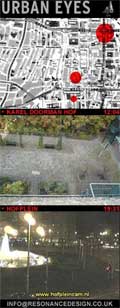
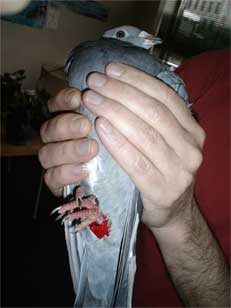 Sample photo strip picture message as delivered by bluetooth and an RFID-ringed pigeon
Sample photo strip picture message as delivered by bluetooth and an RFID-ringed pigeon
What was the most difficult part? Technology? Being allowed to attach rfid readers to surveillance camera? Did you meet with any other hard-to-overcome problem?
I don’t want to see technology and didn’t see it as a difficulty. During the Mediamatic workshop we had a RFID scanner coded and running in 30min. People were already doing loads of similar Bluetooth projects, and after years of developing all sorts of ideas for anything from simple projections to unpredictable pigeons, we could pretty much estimate what I could realize in the two months at V2_. I put a bit of a challenge onto myself by being stubborn and trying to have the whole installation run on Mac OS X instead of PC, but even that wasn’t that
much of a problem. Doing most of the project management was sometimes a bit tiresome. Apart from that it was the usual challenge, including a RAM slot and an adapter dying on me, web order sites that don’t seem to notify the company that you ordered something, luckily finding a C+ OS X coder online in the US who does the coding (thanks again, Alf), promised equipment that never arrives and running around everyday with 2kg of birdseed in your pockets.
Even in a technology ladden project like this, the essence is patience with anyone who helps you and is part of the project. Bottomline is that I always see the human factor being the biggest hurdle and thanks to V2_ this was hardly the case during the two months.
While browsing your links, i stumbled upon vestigii. Can you tell me something about it?
Vestigii was one of my last projects earlier last year. Its a fashion design portfolio build on the concept of a continous, article related design development. The website therefore is a timeline navigation that shows the garments at the time they were perceived and spits out related news articles while your are browsing (shockwave version). The website is also linked to an interactive piece of furniture that displays some of the keywords that pop up whilst browsing the site.
The designer Stefanie Schneidler who worked on it resides in Berlin actually.
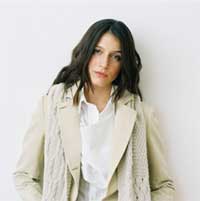
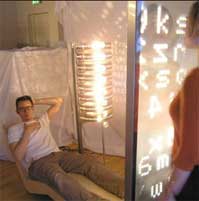 Fashion collection and The Tickerchair fed with news and information
Fashion collection and The Tickerchair fed with news and information
My last question is to satisfy the very own curiosity of someone who’s about to move to Berlin but toyed with the idea of living in London as well. You live in London, do you see it as a centre of creativity as it is often described to be?
I think that London is a great place for people to earn good money(yet the city is expensive as well.) Creative center of the world? I doubt it, as i dont think there is something as a creative center. London is definitely one of the centres for publishing anything any creative is doing, but getting published is a lot through working for big companies or knowing the right people, which is only subtly connected to the most creative ideas. It is the usual dilemma of being both creative and salesman in one person. There is a huge wave of creativity coming from countries like Brazil and Slovakia, a South American and Eastern European drift so to speak, especially in the digital media, which has been going on for about at least two years now, but as they don’t put a focus on publishing, we haven’t heard much from it, yet. Give it another two years.
I think what people don’t see, and I speak from a foreigner’s point of view, not-so-popular art/design/culture is not very much mentioned in everyday London Creative World. If I think back to my small town in Germany and the vast amount of French culture I have been exposed to, here you would have it hard to find French music being played, despite lots of French living here. Creatives here seem to very much adopt to London style rather than staying themselves and maintaining their culture they are coming from. It shows how much other culture London allows you to publish. E.g. I see a bigger potential in Berlin at the moment. I am not talking about the German affiliation to English culture like in “white trash”, where the staff only speaks english to you, but I am rather talking about phenomena like the wave of Russians and the fact of the city turning a blind eye to illegal clubs and exhibition spaces, which is amazing and will lead to a lot of ambitious projects that are not relying on money as well.
More of Marcus’ work is at unvoid.net, but as he says “the site hasn’t been updated for at least a year and the design is about 4 years old.”

